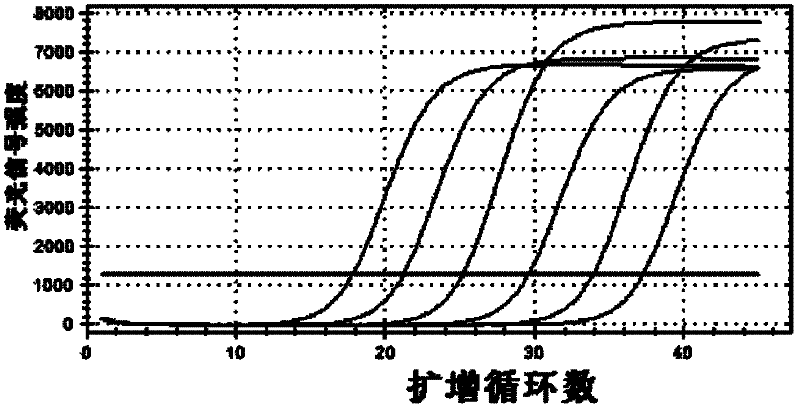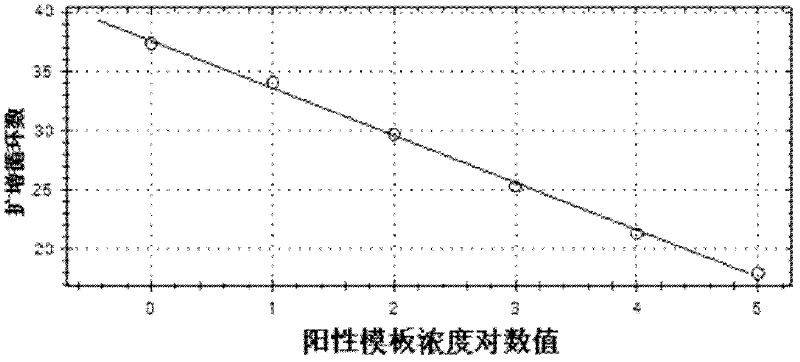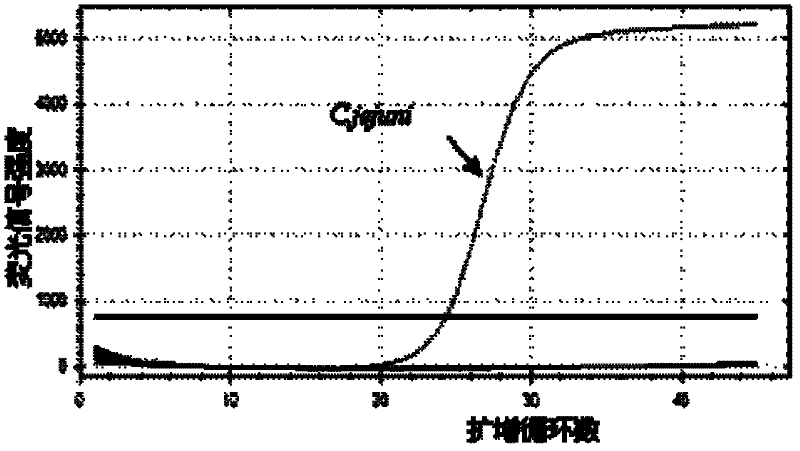Primers, probes, methods and kits for detecting campylobacter jejuni
A technology for the detection of Campylobacter jejuni, which is applied in the field of molecular biology, can solve the problems of low detection sensitivity, harsh culture conditions, and low detection rate, and achieve high detection sensitivity, shorten the detection cycle, and increase the positive rate.
- Summary
- Abstract
- Description
- Claims
- Application Information
AI Technical Summary
Problems solved by technology
Method used
Image
Examples
Embodiment 1
[0041] Example 1 Determination of the specific DNA sequence of Campylobacter jejuni
[0042]The present invention uses BLASTn and Vector NTI Suite 6.0 software to compare the DNA sequences of all sequenced strain-specific genes of all Campylobacter jejuni published by NCBI, and screens out the specific sequence of the Campylobacter jejuni gene. The nucleotide sequence is as follows: Shown in SEQ ID NO.1.
Embodiment 2
[0043] The design of embodiment 2 campylobacter jejuni specific primers and probe
[0044] After repeated screening and verification, the present invention obtains a pair of fluorescent quantitative PCR primers for detecting Campylobacter jejuni and a TaqMan probe used in conjunction with the primers, which are synthesized by Shanghai Huirui Biology Co., Ltd. The probe is 5' labeled with the fluorescent group FAM and 3' labeled with the quencher group BHQ.
[0045] The primer sequence that the present invention obtains is:
[0046] Upstream primer: CGGATAGTTATAGTATTGAAGTTATTGG, Tm: 58°C,
[0047] Downstream primer: GAAGCAGCATAAATAGGATCTTTTG, Tm: 59°C,
[0048] The probe sequence that the present invention obtains is:
[0049] FAM-TTCTGGAGCACTTCCATGACCACC-BHQ1, Tm: 65°C.
Embodiment 3
[0050] Example 3 Establishment of a fluorescent quantitative PCR detection method for detecting Campylobacter jejuni
[0051] (1) Optimization of real-time PCR experiment parameters
[0052] Refer to Invirogen recommended fluorescent quantitative PCR 25μL system: 2×PCRUDG12.5μL, mg 2+ 3.5mM, PCR nucleotide MIX (including dNTP) 4mM, final concentration of upstream and downstream primers is 0.4μM, final concentration of probe is 0.2μM, DNA template 2μL. Optimize one condition and fix the rest. The optimal conditions were judged according to the Ct value and the strength of the fluorescent signal, and the best conditions were combined as the final optimized system.
[0053] The annealing temperature was optimized from 55°C to 65°C; the primer was optimized according to the final concentration from 0.08μM to 0.62μM; the concentration of the probe was optimized from 0.08μM to 0.36μM; mg 2+ The concentration was optimized between 1.5-5mM; the concentration of dNTPs was optimized ...
PUM
| Property | Measurement | Unit |
|---|---|---|
| coefficient of variation | aaaaa | aaaaa |
Abstract
Description
Claims
Application Information
 Login to View More
Login to View More - R&D
- Intellectual Property
- Life Sciences
- Materials
- Tech Scout
- Unparalleled Data Quality
- Higher Quality Content
- 60% Fewer Hallucinations
Browse by: Latest US Patents, China's latest patents, Technical Efficacy Thesaurus, Application Domain, Technology Topic, Popular Technical Reports.
© 2025 PatSnap. All rights reserved.Legal|Privacy policy|Modern Slavery Act Transparency Statement|Sitemap|About US| Contact US: help@patsnap.com



